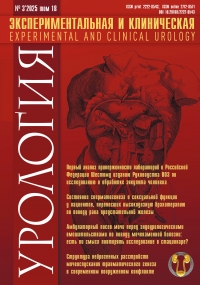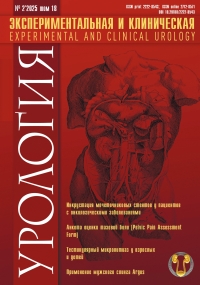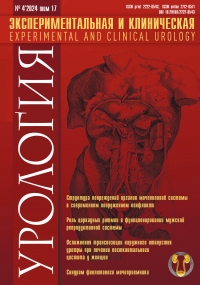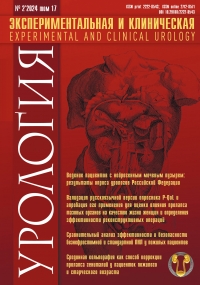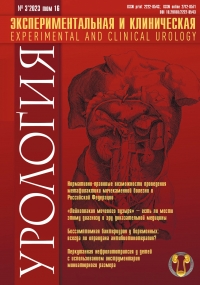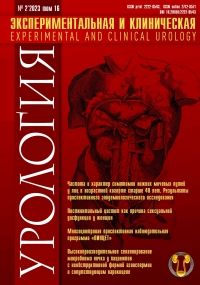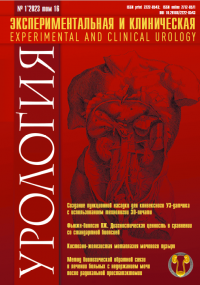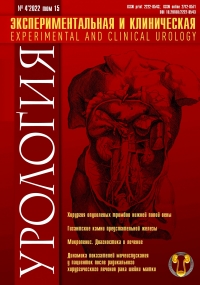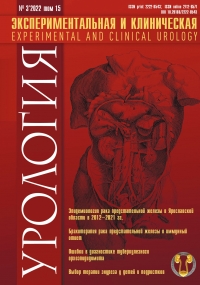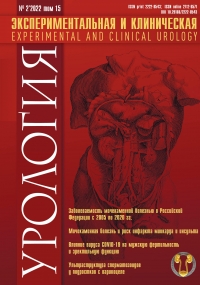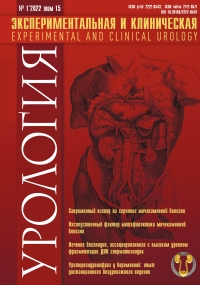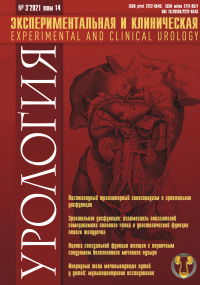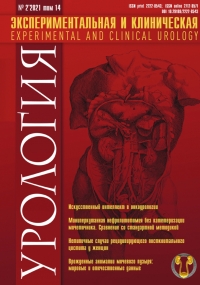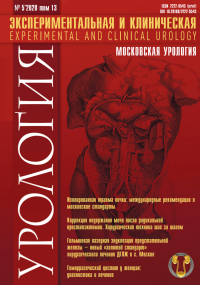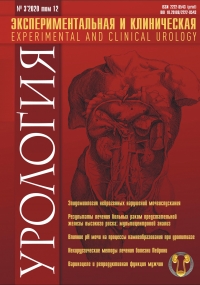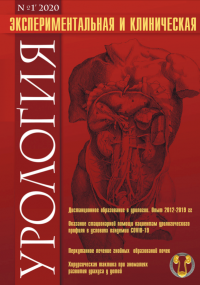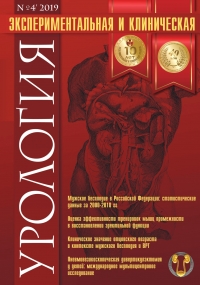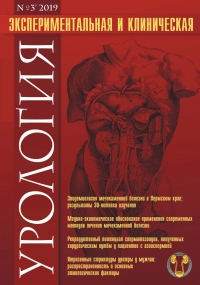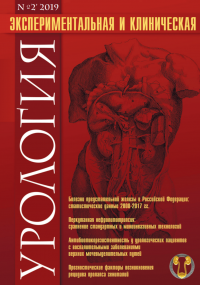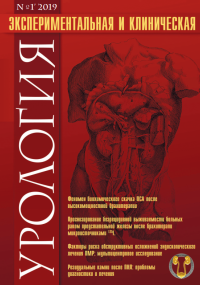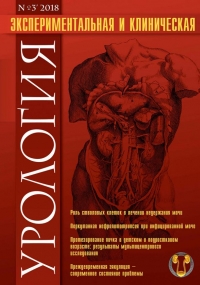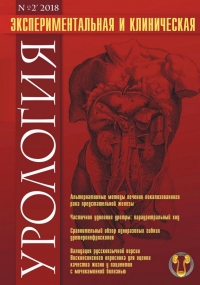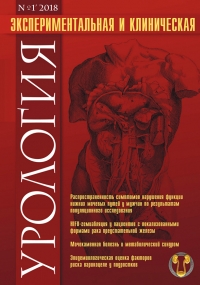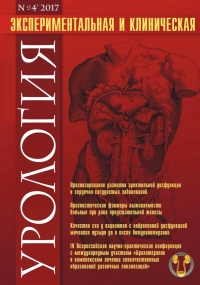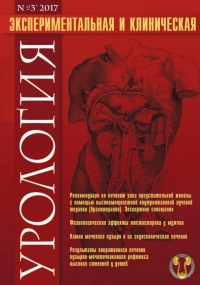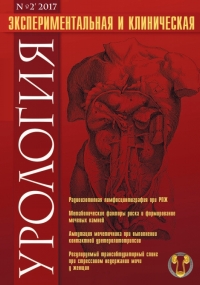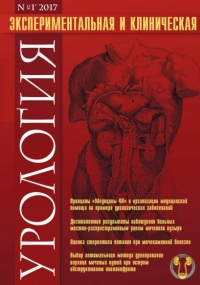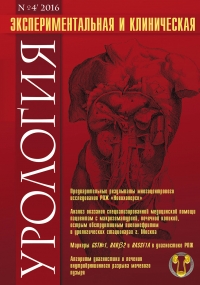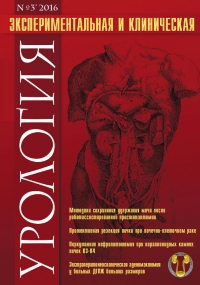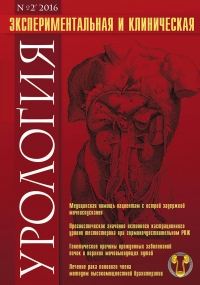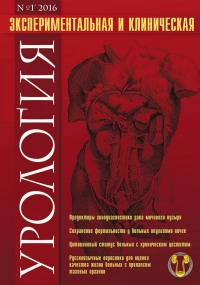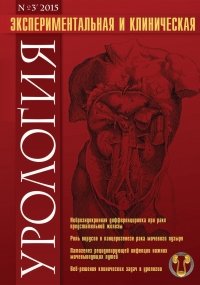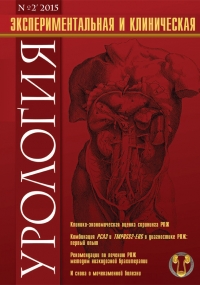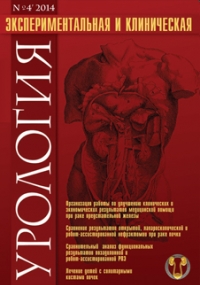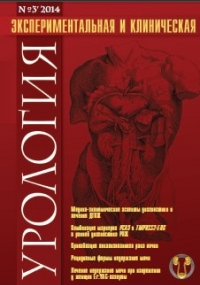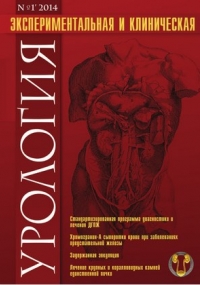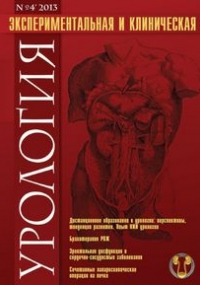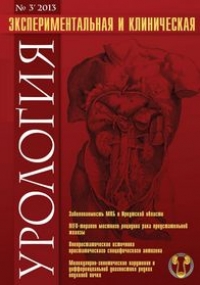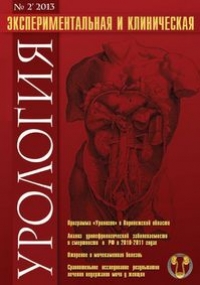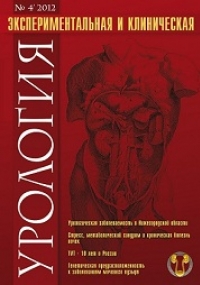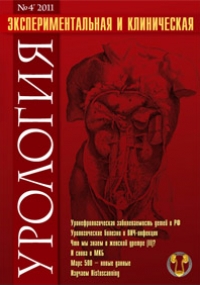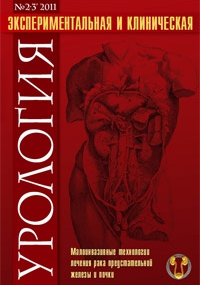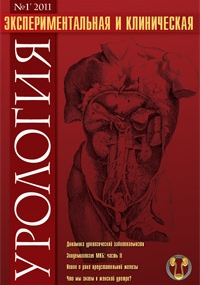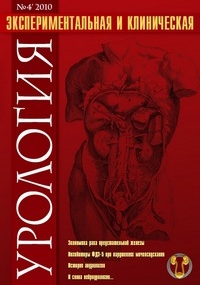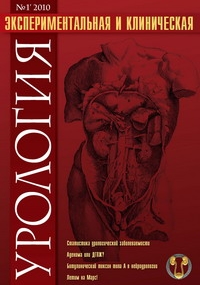Morphological features of sulpiride model of benign prostatic hyperplasia in rats
 2357
2357 In order to create an experimental model of benign prostatic hyperplasia (BPH), rats aged 16-18 months received sulpiride (40 mg per 1 kg of weight) during a 30-day period. 10 days after the final injection, the relative mass of the dorsolateral lobes of the prostate was twofold higher, the volume of the glandular tissue increased by 25%, and the thickness of the epithelial layer of the prostate increased 1.6-fold (the numbers are provided in comparison with the control level). Prostate hyperplasia has developed not only as a result of a more rapid cell division but also because of intracellular hypertrophy. Prostate epithelial cells of the rats, which underwent the experiment, contained 1.5-fold more cytoplasm than the cells obtained from the control group. The expression level of Ki-67 in the cells of glandular epithelium obtained from mice with sulpiride model of BPH did not differ from control. 1.7-fold increase in the level of caspase-3 expression was observed in prostate tissues 10 days after the end of the sulpiride course, which indicates activation of apoptosis and sre-versibility of the experimentally induced pathological condition. Correlation analysis has revealed a direct relationship between the mass of the prostate, the volume of its glandular tissue, thickness of acini within the prostate and the expression of cas-pase-3 in animals from control and experimental groups.
Authors declare lack of the possible conflicts of interests.
| Attachment | Size |
|---|---|
| Download | 255.88 KB |


